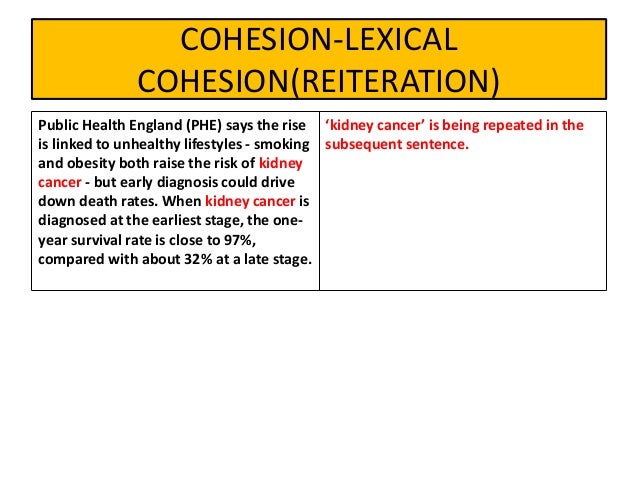

- #Cohesion and coherence examples spoken discourse how to
- #Cohesion and coherence examples spoken discourse series
keying shift - 6 Closing remarks - Notes - References - Part II: How to Negotiate Coherence: Degrees of Coherence - Disturbed Coherence: 'Fill me in' - 1 Introduction - 2 Coherence as a scalar notion - 3 Default principle of coherence - 4 Some examples - 5 Disturbed coherence versus coherence impairment - 6 Types of disturbed coherence - 7 Sources of disturbed coherence - 8 Conclusion - Notes - References - Coherence and Misunderstanding in Everyday Conversations - 1 Coherence and misunderstanding - 2 Interactional development of misunderstanding - 3 Conclusions - Notes - References - The Effect of Context in the Definition and Negotiation of Coherence - 1 Introduction and aims - 2 The oral examination in Italian universities - 3 The context-dependency of coherence - 4 Negotiating coherence - 5 Conclusion - Notes - References - Coherence in Summary: The Contexts of Appropriate Discourse - 1 Introduction - 2 Definitions - 3 Written language use - 4 Co-operation and interpretation - 5 Coherence and appropriation of meaning - 6 Appropriation and summarisation - 7 Summaries vs.

Semiotic Spanning at Conferences: Cohesion and Coherence in and across Conference Papers and their Discussions - 1 Introduction - 2 Why conference papers and discussions as data? - 3 Cohesion and coherence - 4 Intertextuality - 5 Genre - 6 Semiotic spanning - 7 Conclusion - Notes - References - Coherent Keying in Conversational Humour: Contextualising Joint Fictionalisation - 1 Introduction - 2 Punchlines, humorous keying and relevan - 3 Discussion of Data 1 - 4 Discussion of Data 2 - 5 Topic shift vs. Non-Native Argumentative Writing - 1 Review of the issue: cohesive ties in learners' writing - 2 A contrastive developmental corpus: rationale and retrieval - 3 Causal conjunctions I: dealing with numerical data - 4 Causal conjunctions II: pointers to non-native patterns - 5 Causal adverbs and prepositions - 6 Extending the search: lexical causal patterns - 7 Lexical strategies, semantic prosody and more non-native patterns - 8 Summing up: idiomaticity and non-native deviancies - Notes - References - Coherence through Understanding through Discourse Patterns: Focus on News Reports - 1 Aim - 2 Genres and text types - coherence and cohesion - 3 Introducing the notion discourse pattern - 4 Coherence in terms of understanding - 5 Coherence in terms of discourse patterns - 6 On the ontologicai status of discourse patterns - 7 Conflating discourse patterns in the American press: Clinton and Yeltsin in Helsinki - 8 Conclusion - Notes - References
#Cohesion and coherence examples spoken discourse series
Editie: 1 Beschrijving: 1 online resource (314 pages) Reeks: Pragmatics & Beyond New Series v.63 Inhoud: COHERENCE IN SPOKEN AND WRITTEN DISCOURSE - Editorial page - Title page - Copyright page - Table of contents - Acknowledgements - About the authors - Introduction: Views of Coherence - Part I: How to (Re-)Create Coherence: Means of Coherence - Coherent Voicing: On Prosody in Conversational Reported Speech - 1 Coherence as a conversationalist's practice and an analyst's object - 2 Three types of 'trouble' in reported speech sequences - 3 Prosodie and paralinguistic framing in 'successful' reported speech sequences - 4 Conclusion - Notes - References - It Takes Two to Cohere: The Collaborative Dimension of Topical Coherence in Conversation - 1 Introduction - 2 Simple negotiations - 3 Pre-signalling a proposed topic - 4 Complex negotiations - 5 Unsuccessful negotiations - 6 Conclusion - Notes - References - Learning to Cohere: Causal Links in Native vs. Selected papers from the International Workshop on Coherence, Augsburg, 24-27 April 1997 ISBN: 9789027283801 Auteur (persoon): Bublitz, Wolfram. : Titel: Coherence in Spoken and Written Discourse How to create it and how to describe it.


 0 kommentar(er)
0 kommentar(er)
